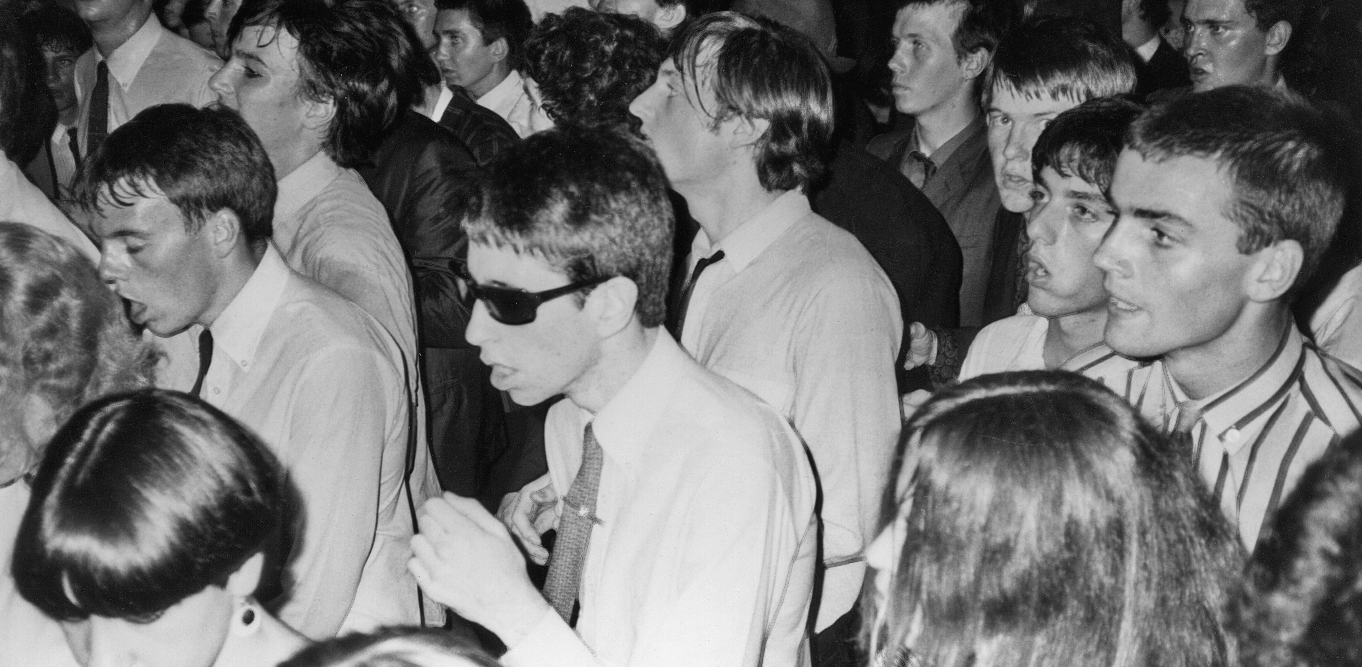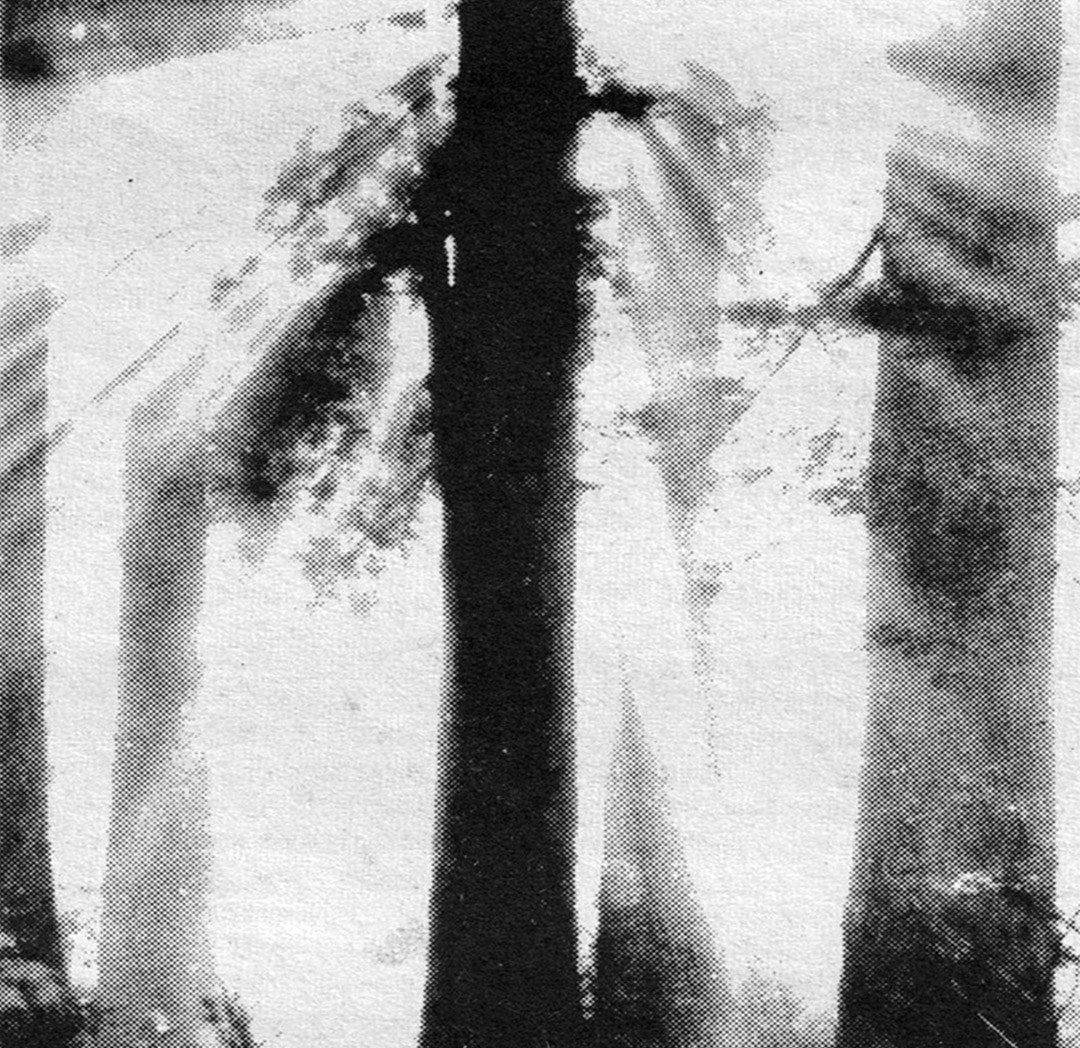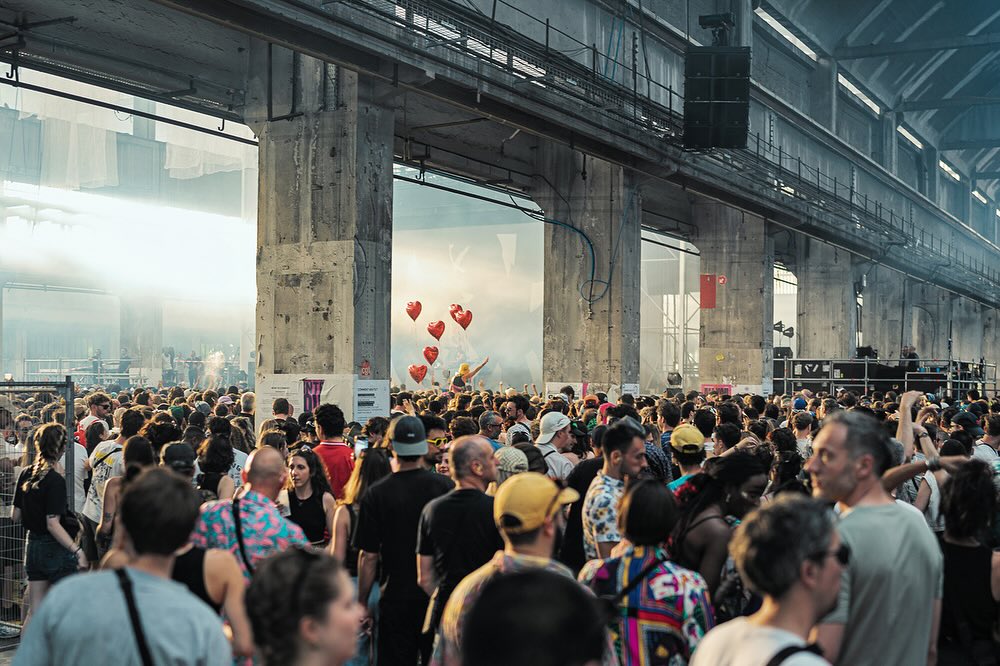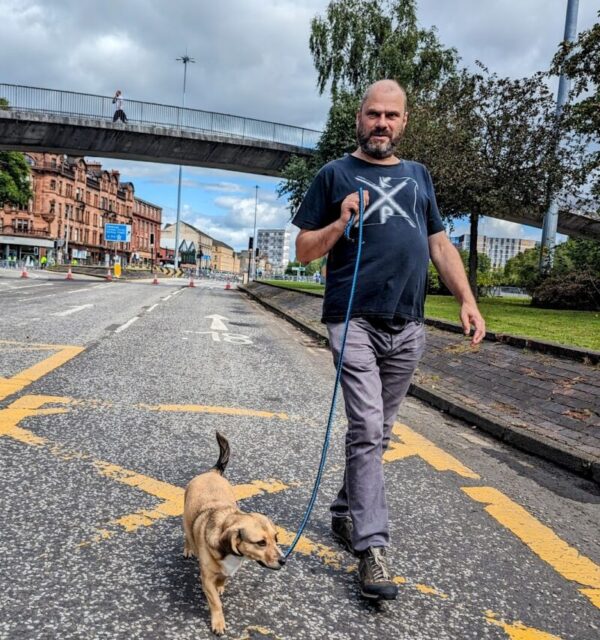The History Of The Great British Weekender

The weekender occupies a special, hedonistic place in British culture. A festival for the working man, weekenders are there to dance away the grit and graft of the week, to completely immerse yourself in your chosen tribe, hear the best music of your life and – crucially – not see a single splatter of mud. Free from the genre polygamy and lowest common denominator booking policies that plague the modern festival (look! We’ve got a Mumford & Sons AND Calvin Harris!), weekenders are for the fans who want to live and breathe their culture, who want to hear the deepest tunes, see the best dancers and wear the sharpest threads.
It’s true that the words ‘weekender’ and ‘festival’ have become somewhat interchangeable in the last decade, but – once at least – there was a discernable difference. Open air festivals are an imported format – their roots lie in America’s counter culture rock explosion of the 60s, specifically taking the hippy pinnacle of Woodstock as a starting point. This model of festival took place in sun kissed fields, soundtracked by the wild, long haired flail of acid rock. In England, this utopian ideal also came with the added bonus of rain, cold, mud and cow shit. The whole wet, filthy scene had no appeal to the hordes of kids who were into the tighter, sharper looks of imported black American dance music – the Mods, then, later the soul boys. They had to search elsewhere for their recreation.
Luckily, the British had already come up with the perfect solution for fun-in-the-not-very-much-sun; the holiday camp. Created as a retreat for families unable to afford foreign travel, the 1960s and ‘70s saw a boom in camps springing up around the country. Starting life as naff family destinations, these camps soon found themselves colliding with Britain’s polarised post-war youth culture, with the infamous skirmishes between Mods and Rockers gathering terminal velocity on the Easter Bank Holiday weekend of 1964. Rival gangs descended on Butlins in Clacton, ostensibly to take a break from urban (and suburban) living. Predictably they ended up slugging it out on the beaches (interestingly enough, Clacton is also the site of Britain’s oldest known weapon – the Clacton Spear, dated at 450,000 years old. Obviously they’ve been scrapping there for a while).

An epidemic of seaside resort violence -some of it almost certainly staged for the press- followed. It’s an odd genesis, but somewhere between the fist fights, the arrests, the smashed deck chairs, wrecked holiday chalets, media panic, souped up bikes, cheeky quickies and bracing sea air, the idea – and the word – weekender lodged itself into folk consciousness. It was a phrase to conjure up escape from the city, fleeing to the coast of our small island in the company of your peers, hunting for wild nights and snatches of drunken clarity. It meant a momentary freedom from the humdrum grind of England’s class obsessed society, the chance to be part of something greater; a tribe; a movement; an idea. And if it came with the occasional ruck, then so be it.
Whilst this seed may have been planted, it took a long time for music to be formally added into the mix. It wasn’t until 1979 that anyone managed – with any long term success – to combine the distinctly English paradise offered by the holiday resort, with the serious business of being a committed underground music fan.

The event was the inaugural National Soul Weekender – now known as Caister’s, the longest running soul weekender in the world. It was started by a group of Southern based DJs known as the Soul Mafia. Key to the group was DJ Froggy – a criminally under acknowledged DJ in UK dance history. He was hugely influential in breaking American soul into the UK market, he was the first man to bring a set of Technics 1200s into the country, and he introducing many of the DJ techniques that we now take for granted. Froggy, who passed away in 2008, is rarely mentioned now, but back in the seventies he was a major player. In 1979 Froggy, Chris Hill, Chris Brown, Sean French, and Robbie Vincent –the DJs who made up the Soul Mafia –made a pilgrimage to the Paradise Garage. There, they were utterly blown away by the virtuoso skill of Larry Levan, watching in wonder as he demonstrated a near arcane mastery of the dancefloor. Whether the timing is coincidental or not, that was the year they decided to put on the first National Soul Weekender in Caister’s Holiday Camp, Great Yarmouth. Froggy had already taken his custom built soundsystem to the camp, where he’d been playing the 18-30 events. When Robbie Vincent played one of the events with him, Vincent suggested they run their own party, based entirely around soul music. Playing on Froggy’s monster of a sound system, all of the Soul Mafia gathered their various followers, and pulled the event off with great success. The weekender proper was born. Chris Hill, who still plays Caister to this day is understandably misty eyed about that first party – nailing the crucial components of any good weekender in his reminiscence;
“The music was awesome, all new Earth Wind and Fire, Billy Paul, Al Hudson, Mcfadden and Whitehead, new street funk, jazz-funk, philly soul, salsoul, New York – Miami – boogiedisco-tastic!!! and the tribes of soul fans had now created a new phenomenon…THE FAMILY!”
There’s some amazing footage from the 1980 National Soul Weekender (the Caister Soul Weekender name didn’t come until later) in this 2000 BBC documentary on the Soul Mafia – watch the room literally jumping as Froggy drops tracks. You can also hear excerpts the Froggy set here– it’s taken from the point where he’s starting to mix tunes rather than just segueing, and well worth checking out for some deep percussive disco gems.
With Caister in the ascendency, it was inevitable copycat events would spring up. As they did, the soul scene passed through rapid transformation – with the Soul Mafia themselves entering their 30s, a new generation of DJs and punters were pushing through, clamouring for the circuit board boom bap of electro and hip hop. By ’86 house music was knocking. A splintering was inevitable. Looking back, it seems that there was a slim window in which the scenes managed to co-exist, as can be witnessed in this remarkable footage from the long forgotten 1988 Prestatyn Weekender. The fourth event to be held in the Welsh resort of Prestatyn, and still billed as a soul event, the film opens with footage of a devilish looking acid house smiley, as the strings of Inner City’s ‘Big Fun’ kick in. Froggy’s soundsystem is present and correct at Prestatyn, and he’s joined with a few others of the old guard, still giving it the cheesy chat over disco grooves (my favourite/ the worst thing I’ve ever heard: “I want all the girls in the room to shout ‘big willies’”). But appearing alongside them were new faces – Pete Tong, Paul Oakenfold, Giles Peterson and Nicky Holloway, alongside hordes of kids in raver clobber, gurning their faces off, doing the running man, and shouting ACIIIIIIID. In all honesty it looks like a fucking tremendous party. It’s also one of the few pieces of footage that gives credence to the long repeated myth that acid house united people of all class and race, with a multi-racial crowd, drawn from all walks of life all appearing to have a marvellous time.
Of the many soul weekenders that came in the wake of Caister’s, Southport has proved the most enduring. Whilst Caister has largely stuck to a more traditional soul/ jazz/ funk sound, the Southport weekender, started in ’86, has always opened its doors to the extended soul family. Writing about the first event, Southport founder Alex Lowes notes that the wider palette was always a part of the appeal, noting that they “covered a lot of different styles of music including hip hop, jazz funk, and the beginnings of the house movement…. There were only a few big Chicago tracks around at the time, but boy did it go off when they got played.” It’s been illuminating to see what an astute, clued up event will allow into the soul canon over the intervening years. Alongside the more obvious additions; the jazzy New York house of Masters of Work; the conscious neo soul of India Arie – have been bold decisions. DJ EZs bass heavy 2 step, Bukem’s liquid Drum & Bass and Julio Bashmore and Joy Orbison’s post dubstep mutations have all appeared and been embraced, as this footage of EZ cutting it up in 2014 shows. As with Caister, Southport has an incredibly loyal following, the 6,000 tickets always selling out far in advance of any line up announcements. Southport attendees aren’t going to a gig – they’re going to commune. Footage of early Southport events is a bit thin on the ground, but there is at least this short blast of remarkable jazz dancing from the late 80s. As was noted before – people go to weekenders to see the best dancers…
The turn of the millennium saw a new variation emerge. The first All Tomorrows Parties event was held in 1999 at Camber Sands’ Pontins. Curated by Belle & Sebastian (and titled the Bowlie Weekend) , it represented the weekender completely abandoning its soul roots, whilst preserving the key idea of a smaller capacity event for a dedicated, tribal crowd of music lovers. This was swiftly joined in 2000 by the first Bugged Out Weekender, and the Dedbeat Weekender. The Bugged Out Weekender has now become a much loved fixture on the circuit – it’s inaugural year was anything but. They explain;
“November 17th 2000 was the date of the Bugged Out Weekender at Pontins Holiday Camp, Prestatyn. The cast was beyond stellar: Underworld and Reprazent live, The Chemical Brothers, Dave Clarke, Felix Da Housecat, Green Velvet, Richie Hawtin, Carl Craig, DJ Hype, James Lavelle, Jon Carter, Gilles Peterson, Roger Sanchez, Slam, Justin Robertson, X Press 2, Lottie, Craig Richards, Yousef, Harvey, Mark Rae, Jacques lu Cont, Mr Scruff, Bent, Rob da Bank…the list goes on and on. Even Doves played an acoustic set in the pub run by the Heavenly Social. Thing is only 1500 people (half the capacity) turned up meaning that at best you were able to dance to the Chems without being crushed or see the whites of Karl Hyde’s eyes as he performed but at worst there were sometimes only a handful of people dancing in some of the rooms. Looking at the line-up it still makes us think, ‘What the fuck happened there then?’ But I guess Prestatyn in North Wales was probably not the best choice, it was inflicted with biblical weather in the weeks leading up to it (in fact it was almost cancelled due to flooding).”
Dedbeat, over in Great Yarmouth, was more successful. At its core was a conviction that the furthest reaches of electronica could happily co-exist with speaker shaking hip hop. It’s testimony to Dedbeat’s influence that it’s line ups now seem like standard festival fare- in 2000, sticking Aphex Twin and 2 Lone Swordsmen on a bill with Big Daddy Kane and the Pharcyde seemed revolutionary – particularly as this was when Aphex was going through his most ‘awkward’ DJing phase. A contemporary NME journalist watched in the Aphex Twin set in bewilderment as Richard D James started
“spinning a set of Lionel Richie hits and thrash-metal classics, all rendered unlistenable and nigh unbearable by frequency-modulators rendering the smoothest soul swish and the gruffest metallic-riff equally offensive. Lush it most certainly isn't.”
Just as Caister has inspired imitators on the soul scene, Dedbeat and ATP acted as catalysts for the dance and rock world. The booming festival economy of the noughties saw numerous promoters taking on the weekender concept. Those which worked best were run by promoters who understood that catering to your niche was crucial – for example, Bang Face have run blinding weekenders since 2008 by providing a loyal group of hardcore nutters something they can’t get anywhere else; mental rave music and clean chalets. Meanwhile, Bloc more explicitly continued the work of Dedbeat by uniting electronica with hip hop. In a neat circle, Bloc ended up taking place in Butlin’s Minehead, the new home of the Southport Weekender.
There’s not space to cover all the many, many weekenders that Britain has seen – we’ve not touched on the Northampton based psychobilly hoe down that’s run since the mid 90s (Bedlam Breakout, since you ask their facebook is over here), or the long standing Goth weekender running in Whitby, the site chosen for its excellent Goth resonance – Whitby is the site of Dracula’s fictional arrival in England. We haven’t even looked at the many, many soul weekenders that have recently sprung up to cater for the 70s and 80s nostalgia crowd, packed with OG ravers who simply refuse to stop dancing.
All you need to know is this -on the comments on Youtube videos, or the numerous Web 1.0 fan forums devoted to the weekenders, on the walls of facebook groups and the letters pages of tiny fanzines, you hear the same story again and again: “they were the best days of my life.”
Bloc 2015 happens from 13th – 15th March next year at Butlins Minehead. Full details here.


















Must Reads
David Holmes – Humanity As An Act Of Resistance in three chapters
As a nation, the Irish have always had a profound relationship with the people of Palestine
Rotterdam – A City which Bounces Back
The Dutch city is in a state of constant revival
Going Remote.
Home swapping as a lifestyle choice
Trending track
Vels d’Èter
Glass Isle
Shop NowDreaming
Timothy Clerkin
Shop Now